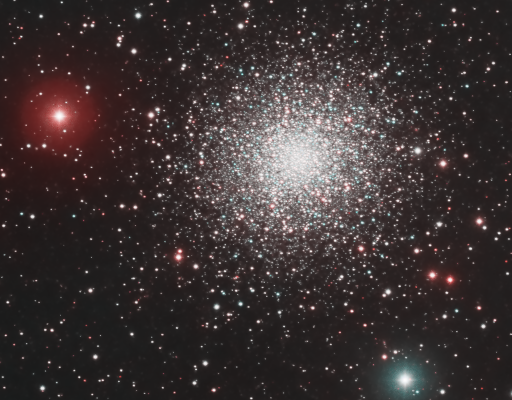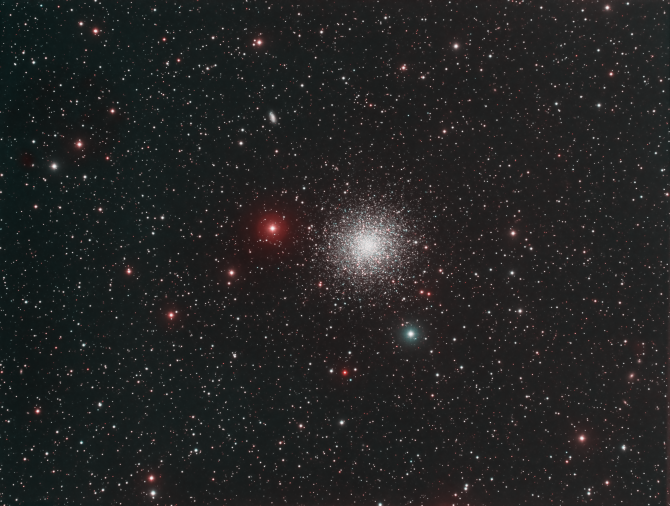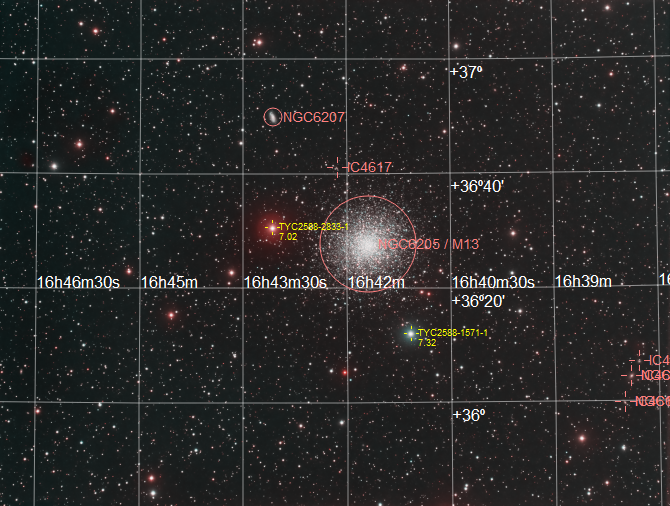

| Rob Hawley's Pages | Almaden Observatory Main Page |
Jun - July 2012
Messier 13 is one of the most popular objects for public star
parties. I must have looked at it hundreds of times with my
own and with scopes I run for the public. As a star
cluster my narrow band filters will not work. Thus I
targeted it for my first test of my revised
Photometric Filter technique. This technique
extrapolates the star colors by using a color filters that are
more narrow than RGB filters to sample the colors. From this
sample I can assign the star a color that is representative of the
star type. This does not try to capture true star colors, in
part, since one of the components is a Near Infrared (NIR)
filter. Red M stars will appear brighter (and redder).
G and K stars may have more of a red component since more of their
curve in NIR was captured. A and brighter stars will be
bluer since they are dimmer in NIR than they are in red. The
goal however, we be to come as close to correct star colors as I
can.
How close are the resulting colors to LRGB? See the
discussion on my Using
Photometric Filter to Overcome Light Pollution.
click on the images below for a larger image
 |
 |

click for a larger version.
The data was captured as two High Dynamic Range Images each
constructed from 3 exposures
| Filter |
Exposures |
|---|---|
| Johnson/Cousins B Filter (pB) | 32 x 030 seconds |
| 30 x 120 |
|
| 28 x 600 |
|
| Near Infrared Luminance (NIR) |
32 x 030 |
| 30 x 120 |
|
| 36 x 600 |
Of course this is only what met the image quality
standards.
The images were processed with PixInsight. The individual images were combined using HDR Composition. An RGB image was then created using PixMath